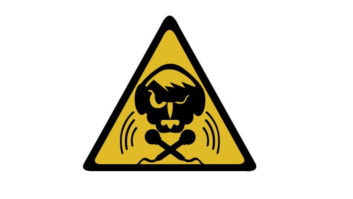Settling in for a relaxing dinner, I turned on the local corporate-owned adult standards radio station to listen to some classic mellow music sung by long-ago vocalists. As the clock approached the top of the hour, something different suddenly appeared: an instrumental.
Ah, I thought, just like the good old days of radio when the backtimed instrumental signaled it was almost time for news. The theme from “Hill Street Blues” began and my emotions drifted back 25 years …
Until just as the orchestration swelled past the introduction to its up-tempo section, the song was rudely interrupted by a station ID and the CBS radio news theme. The song quickly faded after airing for only about 45 seconds.
Obviously the station’s automation system didn’t understand the importance of backtiming.
Adrenaline pump
We’re living in the age of the lost art of radio backtiming. It wasn’t so many years ago that the DJ had to cue up the instrumental recording, subtract the cut’s time from the top of the hour and start the music off air. Then when the hour’s final vocal song ended, the announcer would gently fade up the instrumental in the background so it would conclude just before the top-of-the-hour news.
Some of us even tried to make the transition sound smooth by finding an instrumental that blended into the same key as the previous vocal piece.
It was, truly, an art. One that gave incredible feelings of triumph when it worked and pure panic when the backtimed song came up a short and allowed seconds of dead air.
Backtiming was an important part of announcer training when I started teaching college 25 years ago. I would watch as students’ hands would shake when they placed the needle on the record, disengaging the turntable to cue up the song and then tentatively wait until the last possible moment to push play.
I empathized because I was once a novice myself on the 100,000 watt FM station where I famously started a popular LP in 45 rpm mode The hit song was playing Chipmunk-style before I suddenly shifted it into 33-1/3 gear with a loud “clunk” that was heard live on the air.
Today’s automated stations no longer need a live body to cue up songs. Modern announcers voice-track over computerized ramp countdowns or send MP3s voiced from another state. Even some “live” music announcers sit in the control room while playing back their own pre-recorded, error-free “ad-libs” to make sure that they sound perfect.
The canned chatter may be tighter but the content is mediocre. It has lost that fly-by-the-seat-of-your-pants adrenaline-pumping sound that often brought out the best (and the worst) in radio professionals.
Just not the same
Contemporary air talent on a music station is no longer required to feel the emotional rush that comes from hoping that the backtimed song will end at the right time. Few take the time and energy to creatively finesse music introductions, which has resulted in fewer listeners sitting around their radios admiring DJs for their amazing timing or wondering what is going to happen next.
Most music stations today don’t carry news anyway and don’t have to worry about announcers hitting hard breaks. The few that do appear to not care if a well-known instrumental gets cut off in the middle of the song, making the station sound amateur — they’re just happy that the corporate automation system was working properly so that no human body was required to be paid!
The lost art of backtiming is just one reminder that even in today’s computerized world, announcers and owners need to continue to take pride in every second that a radio station is on the air.












